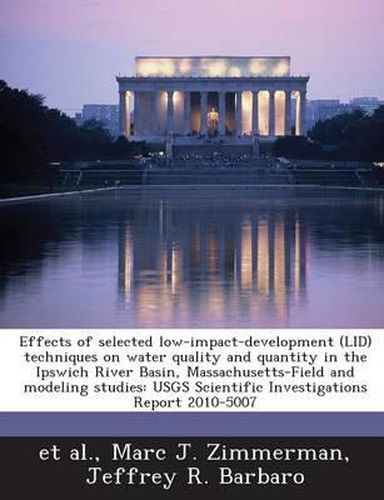Readings Newsletter
Become a Readings Member to make your shopping experience even easier.
Sign in or sign up for free!
You’re not far away from qualifying for FREE standard shipping within Australia
You’ve qualified for FREE standard shipping within Australia
The cart is loading…






During the months of August and September, flows in the Ipswich River, Massachusetts, dramatically decrease largely due to groundwater withdrawals needed to meet increased residential and commercial water demands. In the summer, rates of groundwater recharge are lower than during the rest of the year, and water demands are higher. From 2005 to 2008, the U.S. Geological Survey, in a cooperative funding agreement with the Massachusetts Department of Conservation and Recreation, monitored small-scale installations of low-impact-development (LID) enhancements designed to diminish the effects of storm runoff on the quantity and quality of surface water and groundwater. Funding for the studies also was contributed by the U.S. Environmental Protection Agency’s Targeted Watersheds Grant Program through a financial assistance agreement with Massachusetts Department of Conservation and Recreation. The monitoring studies examined the effects of (1) replacing an impervious parking lot surface with a porous surface on groundwater quality, (2) installing rain gardens and porous pavement in a neighborhood of 3 acres on the quantity and quality of stormwater runoff, and (3) installing a 3,000-square foot (ft2) green roof on the quantity and quality of stormwater runoff. In addition, the effects of broad-scale implementation of LID techniques, reduced water withdrawals, and water-conservation measures on streamflow in large areas of the basin were simulated using the U.S. Geological Survey’s Ipswich River Basin model.
$9.00 standard shipping within Australia
FREE standard shipping within Australia for orders over $100.00
Express & International shipping calculated at checkout
During the months of August and September, flows in the Ipswich River, Massachusetts, dramatically decrease largely due to groundwater withdrawals needed to meet increased residential and commercial water demands. In the summer, rates of groundwater recharge are lower than during the rest of the year, and water demands are higher. From 2005 to 2008, the U.S. Geological Survey, in a cooperative funding agreement with the Massachusetts Department of Conservation and Recreation, monitored small-scale installations of low-impact-development (LID) enhancements designed to diminish the effects of storm runoff on the quantity and quality of surface water and groundwater. Funding for the studies also was contributed by the U.S. Environmental Protection Agency’s Targeted Watersheds Grant Program through a financial assistance agreement with Massachusetts Department of Conservation and Recreation. The monitoring studies examined the effects of (1) replacing an impervious parking lot surface with a porous surface on groundwater quality, (2) installing rain gardens and porous pavement in a neighborhood of 3 acres on the quantity and quality of stormwater runoff, and (3) installing a 3,000-square foot (ft2) green roof on the quantity and quality of stormwater runoff. In addition, the effects of broad-scale implementation of LID techniques, reduced water withdrawals, and water-conservation measures on streamflow in large areas of the basin were simulated using the U.S. Geological Survey’s Ipswich River Basin model.